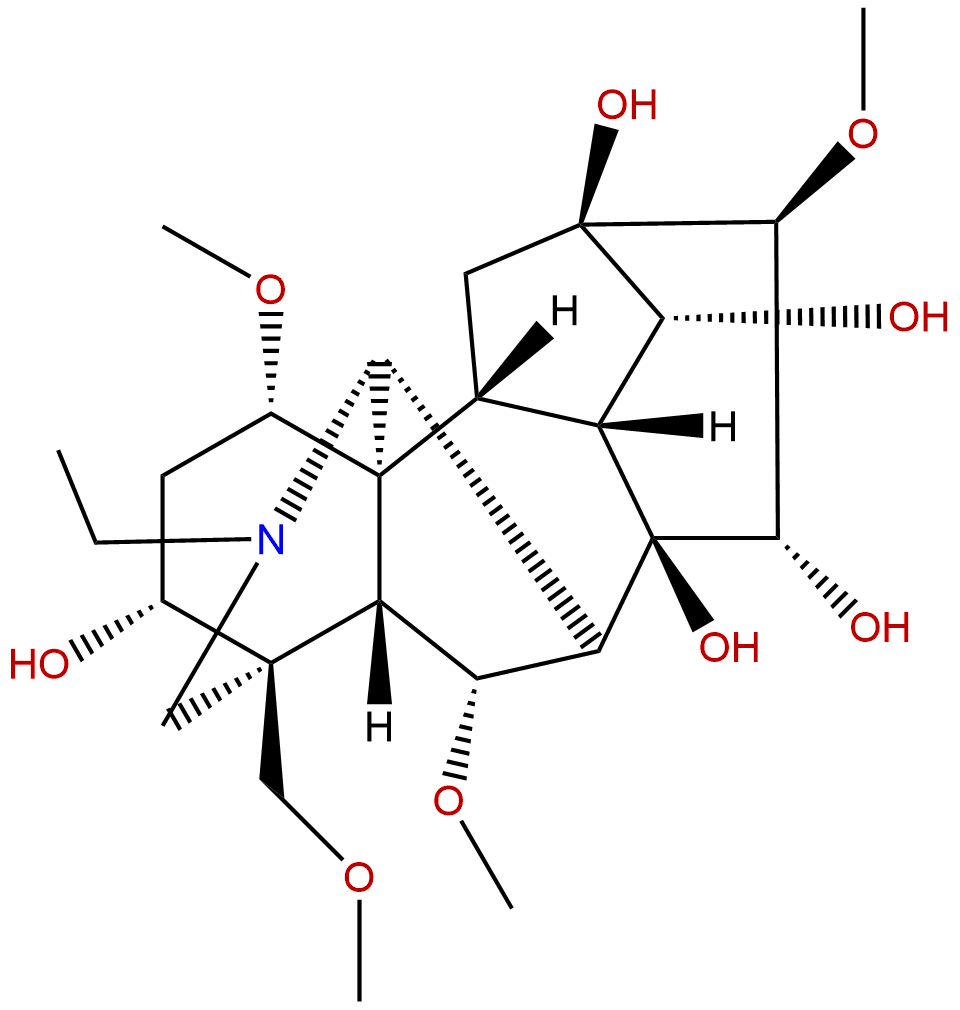Product name: Aconine
Synonym name: Jesaconine
Catalogue No.: BP0120
Cas No.: 509-20-6
Formula: C25H41NO9
Mol Weight: 499.601
Botanical Source: Alkaloid from Root of Aconitum soongoricum (Ranunculaceae), also obt. by hydrol. of Aconitine
Physical Description: Powder
Type of Compound: Alkaloids
Purity: 95%~99%
Analysis Method: HPLC-DAD or/and HPLC-ELSD
Identification Method: Mass, NMR
Packing: Brown vial or HDPE plastic bottle
Storage: Store in a well closed container, protected from air and light. Put into refrigerate or freeze for long term storage.
Whenever possible, you should prepare and use solutions on the same day. However, if you need to make up stock solutions in advance, we recommend that you store the solution as aliquots in tightly sealed vials at -20℃. Generally, these will be useable for up to two weeks.
The product could be supplied from milligrams to grams, up to kilograms
Inquire for bulk scale.
Descriptions:
Aconine can inhibit RANKL-induced osteoclast differentiation in RAW264.7 cells by suppressing NF-κB and NFATc1 activation and DC-STAMP expression.[1]
Aconine has GW26-e4470 effect on the expression of Sirt-1 and eNOS system in EAhy926 cell injured by Homocysteine.[2]
Aconine can attenuate hepatic fat degeneration of rats with fatty liver induced by high-fat diet through decreasing TG,TC deposit in liver.[3]
References:
[1] Zeng X Z, He L G, Wang S, et al. Acta Pharmacol Sin, 2015, 37(2):255-63.
[2] Liu Y, Zheng Z, Zhou B, et al. J Am Coll Cardiol, 2015, 66(16):C92-3.
[3] Shou Z X, Fan H.Journal of Shandong University of Traditional Chinese Medicine, 2008, 32(2):166-8.
[4] Liu M, Zhang H, Cai Y M, et al.Journal of Pharmaceutical Practice, 2013, 31(3):181-4.


